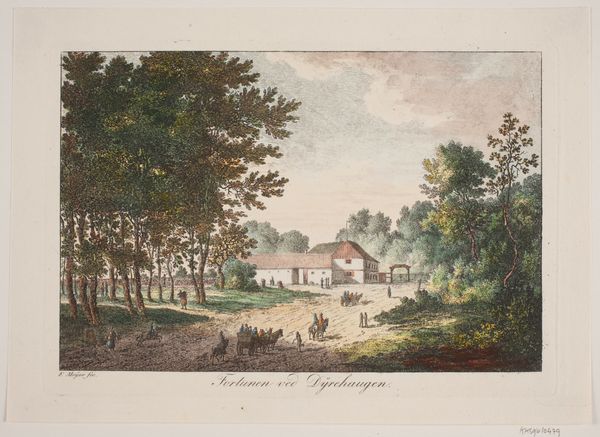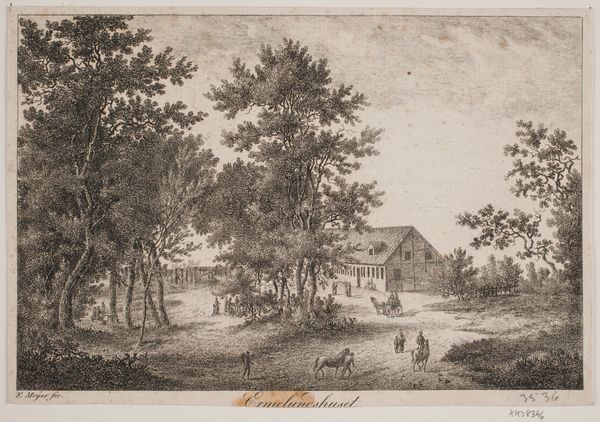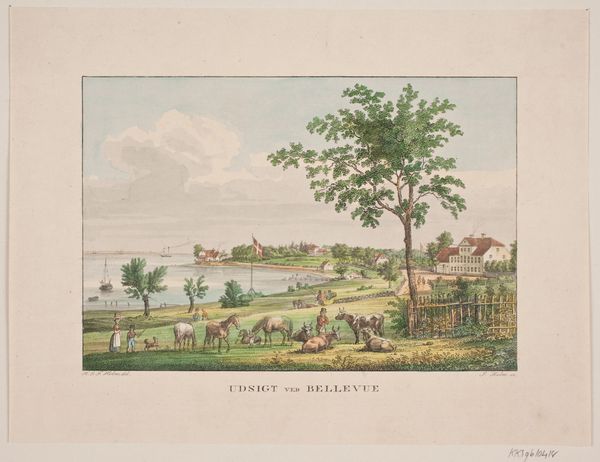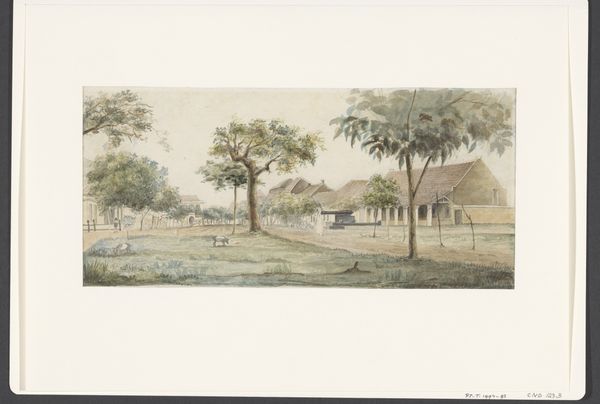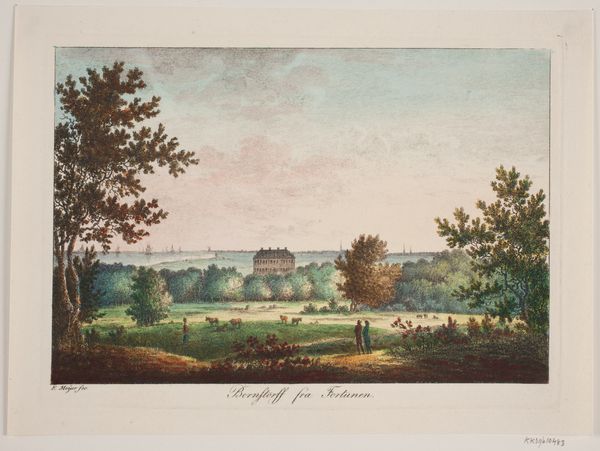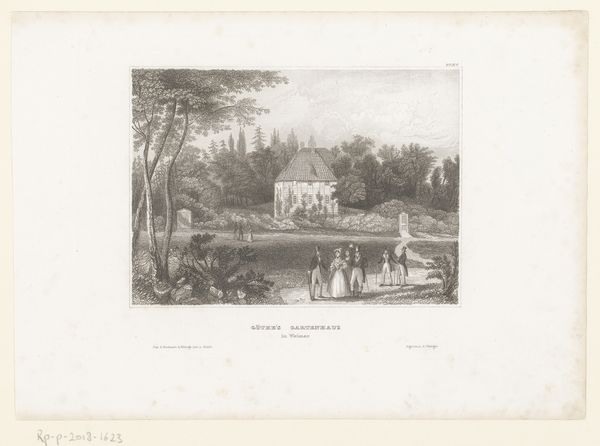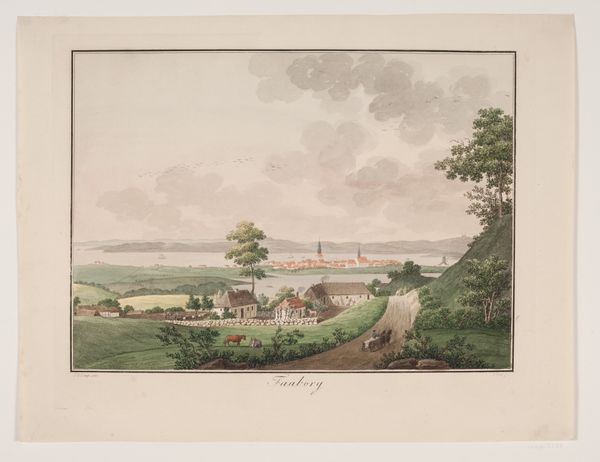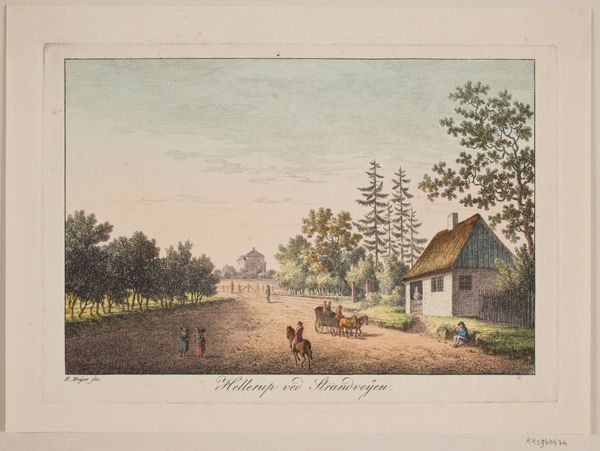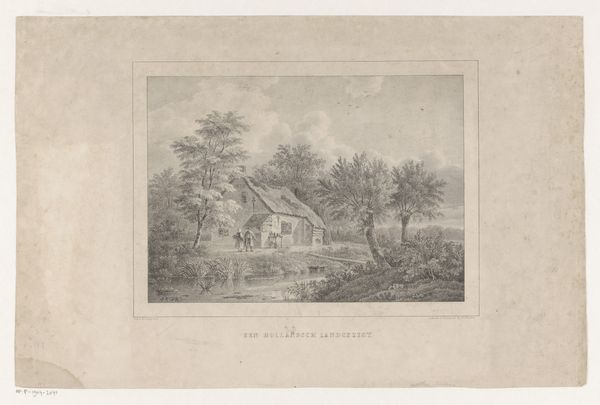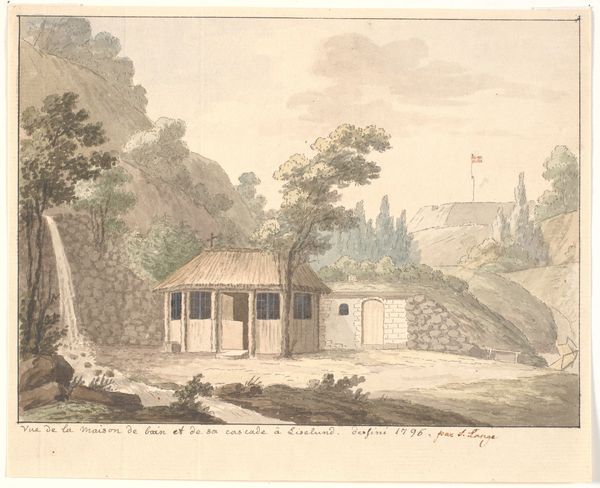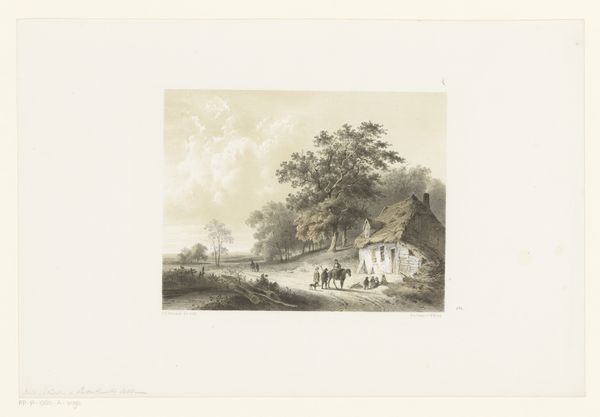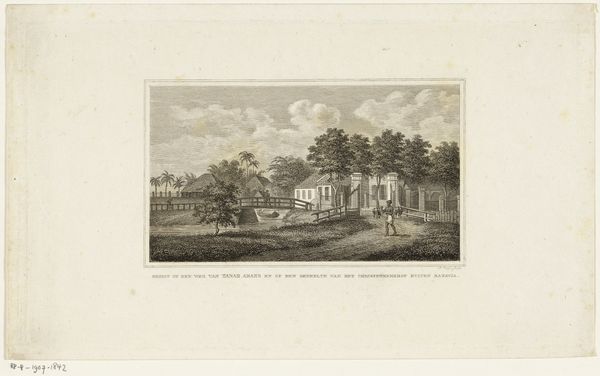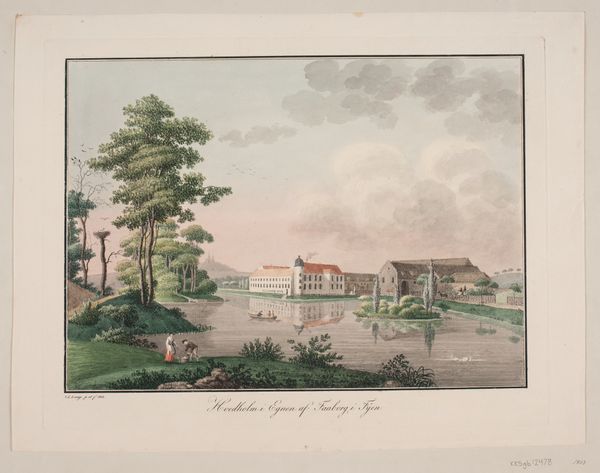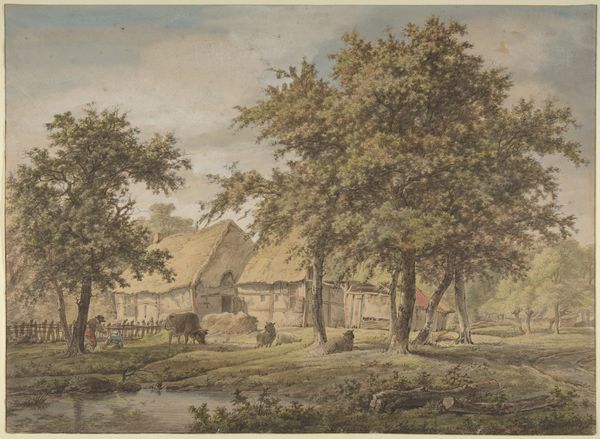
Dimensions: 143 mm (height) x 202 mm (width) (plademaal)
Curator: Let's turn our attention to Elias Meyer's "Ermelundshuset," a watercolor and engraving likely produced between 1763 and 1809, held here at the SMK. What are your initial thoughts? Editor: It feels strangely…idyllic but also faintly melancholy. The soft watercolor washes give everything a dreamlike quality, but there's a definite sense of enclosure, of being observed. The road leading in invites the viewer in, but it seems distant and disconnected from what feels like very ordinary building. Curator: Indeed. Note the meticulous detail Meyer brings to bear, particularly in the arrangement of forms. The deliberate placement of the trees frames the composition beautifully, while leading the eye towards the architectural structure, acting as a crucial anchor. And observe the carefully graded tonality from light to shadow, enhancing depth and imbuing the piece with a palpable atmosphere. Editor: Right. Looking closer at the making, the textures are interesting because you get two distinct things: a reproducible print but, I'm wondering, did Meyer create multiple watercolors of the image itself and how would that have impacted the distribution. Was Meyer mass producing work and selling the idea of "Denmark?" That makes me really curious about the market forces at play behind picturesque landscapes. Curator: Your emphasis on production highlights interesting possibilities. We might also consider the semiotic weight of the building itself. The linear composition draws the viewer's eye toward the crisp architecture set further back within a framed view. In its architectural geometry, is it inviting, domestic, distant or possibly… both? Editor: Precisely! The architectural space and what comes forth. If we delve into the process—watercolor mixed with engraving is quite fascinating. Consider how the initial engravings were rendered. Meyer could emphasize the engraving aspect for texture or lean heavier with watercolor so he can market multiple impressions on slightly different media. I'm interested in this merging. I suspect labor dictates value. How were such works regarded within the traditional hierarchy of the art world at the time, with its clear distinction between craft and fine art? Curator: Such hierarchies are interesting! Meyer's landscape work and style embraces Rococo, while his process merges techniques blurring boundaries with themes of leisure and country life that defined aristocratic taste. Yet by the standards of that time period, would Meyer and this technique have even been considered worthy by academics? Editor: Ultimately, appreciating "Ermelundshuset" requires recognizing that Meyer used combined media and commerciality so the vision and reality can be grasped. The layering of landscape invites discourse, production and reception which underscores art history and production today! Curator: Indeed! It showcases the ability of art to synthesize our understanding between object and reception. It truly captures this moment that goes beyond just visual appreciation.
Comments
No comments
Be the first to comment and join the conversation on the ultimate creative platform.
